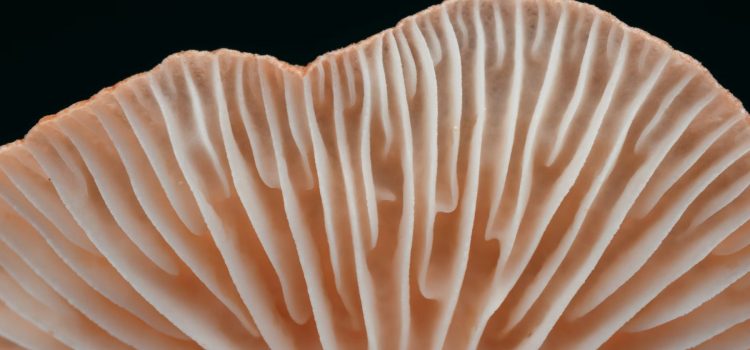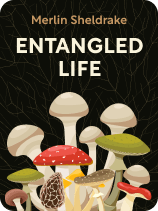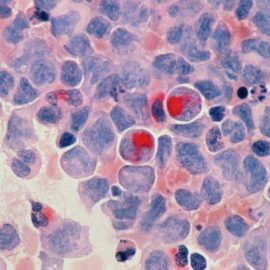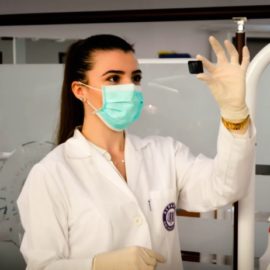

This article is an excerpt from the Shortform book guide to "Entangled Life" by Merlin Sheldrake. Shortform has the world's best summaries and analyses of books you should be reading.
Like this article? Sign up for a free trial here.
What do we know about fungi’s body structures? How are fungi organized?
Like every other living thing, fungi have internal organization—structures such as cells, roots, and organs that organize their matter. In Entangled Life, Merlin Sheldrake breaks down the body structure of fungi, from hyphae to mushrooms.
Learn more about the organization of fungi below.
Organization of Fungi
Sheldrake explains that the cell is the main structure in unicellular fungi, such as yeast. However, most fungi are multicellular organisms whose cells form larger structures. Below we’ll look at fungi’s body structures and their functions.
(Shortform note: Some fungi are dimorphic: They switch between being unicellular yeasts and multicellular organisms. They make this switch in response to environmental changes, suggesting that this ability to transform is an adaptation that enables their survival.)In this section, we’ll explore three structures found in multicellular fungi. First, we’ll describe hyphae—long chains of cells surrounded by a cell wall. Then, we’ll examine two larger structures made of hyphae: mycelia (which typically grow underground) and mushrooms (which typically grow above ground).
Structure 1: Hyphae
Every multicellular fungus is composed of hyphae. According to Sheldrake, hyphae’s thin, tubelike structure allows fungi to perform essential functions. Let’s explore two examples.
Example 1: Hyphae transport water and nutrients to various parts of a fungus, providing hydration and nourishment. (Shortform note: Sheldrake doesn’t clarify whether hyphae are tube-like because hyphal cells are arranged into a tube (like bricks in a cylindrical chimney) or because the hyphal cells themselves are tubelike. Other descriptions of hyphae confirm that the second explanation is true: Hyphal cells are fluid-filled and sheathed with a tubular cell wall.)
Example 2: Hyphae allow fungi to grow inside and around other organisms. Hyphae are able to do this because they’re so thin. For instance, mycorrhizal fungi are slender enough to live inside even the narrowest plant roots. (Shortform note: Hyphae’s slenderness also gives a fungus a high surface-area-to-volume ratio, meaning that a large proportion of a fungus’s cells touch its surroundings. Fungi gain energy by absorbing nutrients through these cells, so this high surface-area-to-volume ratio allows them to digest food efficiently.)
Structure 2: Mycelia
According to Sheldrake, the hyphae of all multicellular fungi form a branching, underground network called a mycelium (plural mycelia). Because of mycelia, fungi can grow across vast distances. For instance, the underground mycelium of a honey fungus in Oregon weighs multiple hundred tons and occupies an area of 10 square kilometers. (Shortform note: According to experts, this massive resident of Oregon is the largest living thing on Earth. Scientists DNA-tested multiple mycelial samples from across the region, confirming that they were all genetically identical.)
Structure 3: Mushrooms
While all fungi form mycelia, only some form mushrooms. Sheldrake explains that mushrooms are a fungus’s fruiting body, like how an apple is for an apple tree. A fungus forms a mushroom when its hyphae knit together and inflate with water. This inflation pushes the mushroom up through the ground, tree, or another environment in which it’s embedded.
(Shortform note: How are thin, thread-like hyphae able to form mushrooms, which are rigid enough to stand upright? In addition to inflating with water—which provides some rigidity—hyphae form upright mushrooms because hyphal cells have rigid cell walls. These cell walls contain chitin, the same material that makes insects’ exoskeletons hard.)

———End of Preview———
Like what you just read? Read the rest of the world's best book summary and analysis of Merlin Sheldrake's "Entangled Life" at Shortform.
Here's what you'll find in our full Entangled Life summary:
- An examination of what we know and don't know about fungi
- How fungi can help solve many modern-day problems
- The three most important benefits of fungi






